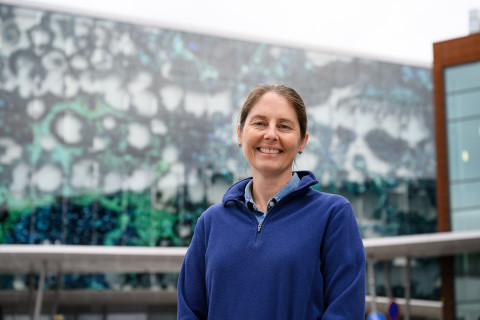High blood pressure in childhood can indicate a specific medical condition. “It is often linked to kidney problems, so children with high blood pressure are often referred to a nephrologist,” says Dr Julie Goodwin, a pediatric nephrologist and Associate Professor of Pediatrics at Yale University.
In recent years, stricter blood pressure control has been recommended for children in order to avoid adverse cardiovascular effects. “However, children’s blood pressure levels can be more challenging than those of adults to interpret, as what’s normal or elevated depends on the child’s age, sex and height.”
A Fulbright-Saastamoinen Foundation Distinguished Chair grant in Health Sciences has enabled Goodwin to start new research on children’s blood pressure based on recent data from Finland. The grant has included two month-long visits to the University of Eastern Finland Kuopio campus in 2023 and 2024, during which she has taken the first steps to collaborate with the Physical Activity and Nutrition in Children (PANIC) intervention study led by Professor Timo Lakka.
“They have collected data from hundreds of children over eight-years of follow-up. What I’m interested in are their blood pressure trajectories over that time, which have not yet been studied or interpreted closely.”
Another collaboration Goodwin is looking forward to is a new project led by her host at the UEF, Professor Jarmo Jääskeläinen, where data collection is about to start. “His research group is interested in parameters of growth and hormonal development. I would like to look at how blood pressure is linked to growth and allostatic load, which refers to the cumulative effects of stressful early life experiences, like if your parents get divorced or there’s financial insecurity. There is some evidence that even brief stressful periods can affect the functioning of genes and regulatory mechanisms that control blood pressure.”
She points out that the grant period has enabled her to get acquainted and identify common interests with researchers in Kuopio, but the actual research will be carried out over the coming years. “Developing longitudinal collaborations is also one of the goals of this grant programme.”
What she finds quite unique in Finland is the compliance of families in long-running studies, such as the PANIC study. “There are not many countries in the world where study participants actually do what is asked and keep coming back for follow-ups for years after enrolment, so it’s an interesting opportunity for me to be part of these projects.”
As a clinical physician, Goodwin was also pleased to visit pediatric wards and clinics at Kuopio University Hospital. “In addition to giving lectures to medical students, I got the opportunity to do some case presentations to the hospital staff related to my specialty. It may have been more to my benefit that anyone else’s, just teaching in a different setting and hearing their perspectives from a different patient population.”
A national meeting of medical educators coincided with her visit, giving her a further chance to discuss and compare the Finnish and American medical education systems.
“It has been really enriching to come and see how things are done somewhere else, and it has also been a great experience for my family,” says Goodwin, who was accompanied to Finland by her husband and three daughters during their summer vacation.



